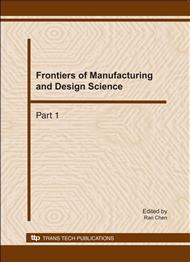p.2862
p.2867
p.2872
p.2877
p.2883
p.2888
p.2892
p.2897
p.2902
Structural Design and Position and Posture Analysis of Five-Fingered Robot Hand Based on Pneumatic Flexible Joint
Abstract:
Design and analysis of a five-fingered robot hand is presented. The robot hand has five multi-actuated fingers each with three flexible joints. Each joint is designed using a novel flexible mechanism based on elongation pneumatic artificial muscle. Its high flexibility and inherent compliance make them ideally suited for delicate tasks, e.g. grasp, pinch, and nip. Furthermore, this paper established the mathematical models to simulate the behavior of grasping; get the relationship between air pressure as well as position and posture of fingers. In view of all characteristics five-fingered robot hands are very well suited for automation and robotic applications.
Info:
Periodical:
Pages:
2883-2887
Citation:
Online since:
December 2010
Authors:
Keywords:
Price:
Сopyright:
© 2011 Trans Tech Publications Ltd. All Rights Reserved
Share:
Citation:


